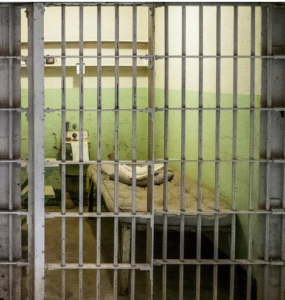Abolish prisons

Abolish prisons?
Are you kidding? What would we do with all the evil doers, the people who make and sell drugs, who steal, who rape, who kill?
People, many people, even the current president, talk about prison reform. But closing down prisons? That is unthinkable.
Well, think about it.
As Ruth Wilson Gilmore, a leading prison abolitionist, suggests in a recent New York Times story: We should think about why we try to solve problems by repeating the kind of behavior that brought us the problem in the first place. That is, in response to violence and cruelty (the bad guys, the criminals) our penal system (the good guys, civil society) chooses to model vengeance and cruelty.
Few people would (or could) argue that U.S. prisons are anything other than grim, dangerous, angry, unhealthy places where those who have done bad things experience, every day in every way, more bad things. The world they live in behind those walls, behind those bars, is a brutal world where no one can be trusted and kindness is suspect. Our prisons model the worst behavior of the people we incarcerate. That’s Ruth Gilmore’s point.
I write about the origins of the penitentiary in my new book, A Grip of Time. Unbelievable as it may seem, incarceration was an Age of Enlightenment reform, designed as a humane alternative to beatings, stonings, burnings, torture or death. But the penal system has transformed into a mega-institution of modern life that is not known, even by its supporters and administrators, for its humanity. Or its enlightenment.
As Gilmore makes very clear, abolition can only be seriously considered if we create vital systems of support that many communities lack, a network of services (education, health, employment, housing, counseling) that would get people the resources they need long before the hypothetical moment when, as Gilmore puts it, they “mess up.” This community support, this humane treatment, models the behavior we want to see. Prison does the opposite.
I would never argue against prison reform. But…what’s the cliché?…rearranging deck chairs on the Titanic? Better we should look to the Scandinavian countries who have created an entirely different system that, from day one, models humane, pro-social behavior. Best, we should seriously consider spending some of the $182 billion a year we spend on mass incarceration on creating communities that do not breed crime and on helping the people who need help.






4 comments
This is an interesting idea, Lauren, and one that I have a visceral ‘oh god no’ reaction to. I do agree though that investigating how prison budgets can be used to create healthier and supportive communities is a terrific concept, just unsure it can ever happen in our ifetime.
My reaction as well. But Ruth Gilmore, profiled in the NYT piece I linked to in the post, makes some pretty good (updated Age of Enlightenment) points. When you know that 95 percent of those who spend time in prison eventually get out, and you know the ugly, violent culture of prisons where the worst of the worst is reinforced, Gilmore’s thinking begins to feel a little less “no god no.” Still…
As long as law and order means: lock up blacks, we will have prisons in USA (and for profit ones to boot).
Agreed. BUT. (I think this is in the NYT article I link to in the post) 2/3 of those serving time in US prisons and jails are NOT African Americans. That 1/3 are–given that only 1/8 of the population is African American–is horrific and a clear sign of racial injustice. But mass incarceration is not just a Black issue. Ruth Gilmore, in the NYT piece (who is herself African American) makes this point. Also, just 8 percent of US prisons are private, for-profit enterprises. That ANY are is incredible.
Leave a Comment